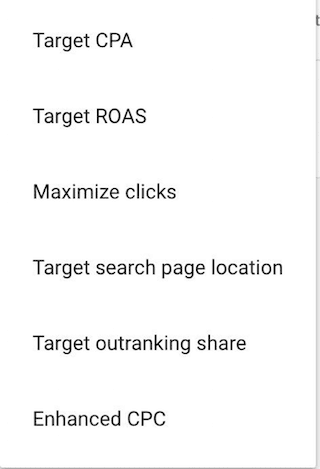This Ultimate Guide to PPC will help you to understand about various aspects of PPC advertising.
Introduction: PPC advertising is an auction-based method of digital advertising on a pay-per-click (PPC) basis. PPC Advertisers pay when a person clicks on (or engages with) an ad in preference to paying when an ad impression is served or viewed on the page.
Campaign goals in PPC is used for:
- Increasing sales
- Generating leads
- Promoting Brand awareness
PPC is all about relevance in search results. Users are searching for specific products, services, and information at any given time.
Main Platforms to Run Advertisement
Google Ads
Run on Google and their Search Partner websites, and Display Network sites. Google Ads is the largest PPC platform in the world. This platform was launched in October 2000 and has gone through several changes over the last 18 years.
Bing Ads
Similar to Google Ads, Bing Ads is a PPC platform showing ads on the search engines like Bing and Yahoo networks. The platform also utilizes Search Partners. Bing Ads is a keyword based advertising. Bing Ads has 142 million unique searchers on the Bing Network till 2017 data.
Overview: The Ultimate Guide to PPC
Businesses often try to coin their own names for products and capabilities. Cost per click (CPC) is the reporting metric used by the ad platforms. CPC refers to the bid rate an advertiser sets (Max CPC) and the rate an advertiser can pay (reported in aggregate as Avg. CPC). Impact-based buying is called CPM because ads are bought on a cost-per-thousand basis, and advertisers pay while their ads load at the page.
To some extent, PPC has end up shorthand for search advertising and marketing due to the fact PPC buying turned into popularized through the search engines like Google and yahoo. PPC shopping for has on account that been embraced by many other types of web sites, including Facebook and more. Advertisers buy display, video, social and native advertisements from search engines on Pay Per Click basis.
Why PPC Advertising (SEM)?
While the PPC emerged as more and more sophisticated over time, there continue to be primary reasons groups of each size spend billions of dollars every year on search advertising:
The capability to target ads based on the industrial rationale that users signal with their search queries
With tracking, advertisers can see the consequences of their campaigns in close to actual time and modify for that reason.
There are many distinct targeting methods available in search advertising. Keyword concentrated on stays the foundation of search advertising: Advertisers bid on key phrases that human beings are probable to use while attempting to find for products or services.
How the PPC Ad Auction Works
Search engines like Google and yahoo don’t display ads for every query, but while a query is monetized, an auction takes area as soon as the person searches. a spread of factors will determine:
An advertiser’s eligibility for the sale
The subsequent order where in eligible ads seem at the web page
How lots each advertiser can pay if their advert is clicked
The first issue is how plenty an advertiser is willing to pay for a click on. Advertisers set a most bid (called Max CPC) that they’re willing to pay. Bids can be set at the character keyword level or at the ad institution stage (a grouping of related keywords).
What is Quality Score?
First-class rating plays a big role in what function ads appear within the search consequences and how much an advertiser will pay per click. Advertisers don’t see an advert real quality score, but Google does show an external pleasant score of 1 to 10 at the keyword stage in Ad Words. While high-quality rating improves, cost-per-click may also (CPC) go down and/or average position enhance.
Google looks at three things when calculating best rating:
Predicted click-through rate (CTR), which reflects the probability a consumer, will click on an advert.
Advert relevance to the question. The advert replica need to actually relate to what the user is searching out.
Landing page revel in. Are the users directed to a web page that displays the motive of the question, and does that web page provide an excellent consumer enjoy?
What is Ad Rank?
Advert Rank determines the positions in which advertisements taking part inside the auction are proven. The better the advert Rank, the higher the placement. The satisfactory advert Rank gets the pinnacle ad role.
It takes under consideration an advert’s quality rating and the advertiser’s Max CPC, plus the predicted click-through rate (CTR) effect of the ad extensions and formats available. Here’s the primary formulation:
Ad Rank = Ad quality score x Max CPC [+ a combination of other factors, consisting of the context of the search such as device and predicted effect of ad extensions]
How is CPC Calculated?
Advert Rank has a massive impact at the real value-consistent with-click (CPC). It’s frequently misstated that advertisers pay one cent greater than the advertiser within the spot below them. But that’s actually simply a bit of the CPC calculation. CPC is calculated using this system:
CPC = The advert Rank of Advertiser underneath/first-class score + $0.01
In Ad Words, due to the reality pricing is based totally absolutely in part at the ad Rank of the next competitor, actual CPCs can range extensively.
What you’ll need before you get started setting up a PPC account and paid search campaign?
PPC has tested to be a exceptionally effective and green advertising and marketing channel for businesses of all sizes and industries. However, it’s also very smooth to waste quite a few money and feature little to reveal for it. Before you start your first campaign, there are some things you’ll want to prepare.
Goals:
As with every marketing attempt, it’s key to set up the business goals to your campaigns first. In PPC, this is particularly crucial because the ones goals frequently inform the structure of your campaigns. One way to structure your campaigns, as an example, is to accomplish that based totally on in which people are for your advertising and marketing funnel.
Adequate budget:
Without a sufficient price range, your advertisements won’t show often. There are numerous approaches to control spend in Ad Words, however doing it with the restricting price range is just about the worst way to accomplish that. It additionally method you won’t get enough clicks or conversion data to analyze and optimize your campaigns, not to mention meet your enterprise goals.
A Testing Mindset:
Your campaigns won’t meet your goals proper out of the gate. Successful search campaigns require ongoing analysis, checking out and optimization. From bidding to focus on to messaging to landing web page strategies, all play a function in performance. And due to the fact the search engines are continuously checking out and introducing new features themselves, there is a regular studying curve and possibilities to try new things.
Dedicated Resources (people):
The size of your budget and complexity of your campaigns will dictate how an awful lot time and talent you must devote to dealing with, analyzing and optimizing your paid search efforts. It’s incredibly clean to waste cash on PPC. Having the proper expertise in area and resources devoted to your efforts will keep cash and headache.
Tracking and measurement for PPC campaigns
Developing a new paid search account is the easy component: You’ll want a primary touch and a credit score card. However, well earlier than you get started out with launching a campaign, there are several foundation steps to take to make certain you’ll get the monitoring and reporting had to gauge overall performance and optimize your campaigns.
Understanding the reporting metrics
There are numerous metrics you’ll want to understand while running and analyzing PPC campaigns.
Impressions: The quantity of times your ads have been served within the search results.
Clicks: The number of times users clicked on or engaged with your ads.
Click-through rate (CTR): the percentage of those who clicked for your ad. It’s calculated with the dividing clicks through impressions. CTR is a completely vital indicator of how properly your advertisements are performing.
Average CPC: The common value consistent with click on paid for the clicks acquired.
Average Function: Where your ads seemed at the search results page (SERP.) The higher the location, the greater the visibility you’ll have. Average position also suggests how your advert Rank compares with other advertisements.
Conversions: The range of conversion moves your advertisements have generated. The action to be tracked is installation at the account level.
Conversion rate: the percentage of people that clicked to your ads and ended up changing.
Great Score: Suggested on the keyword level on a scale of 1 to 10, Quality rating is a hallmark of ways applicable your commercials, keywords and landing web page are to the consumer. A higher great score can mean lower CPCs and higher ad positions.
Beyond keyword targeting in Search: location, device, audience and demographic
Location targeting
Advertisers can set campaigns to run in specific places. Place bid modifiers allow you to increase or decrease the maximum CPC you’re inclined to pay for clicks from target locations. It’s additionally viable to exclude places inside a target region.
Device targeting
It was commonplace practice for advertisers to split out campaigns through device. This manner they may manipulate the budgets and tailor ads and landing pages through device. Then Google added bid modifiers, and there are actually fewer use cases for isolating campaigns by means of tool. In search campaigns, device concentrated on is managed absolutely with bid adjustments.
Audience focused on
Advertisers can import audiences from Google Analytics, upload customer emails and/or smartphone numbers with purchaser fit, retarget those who’ve interacted with a related YouTube channel, reach customers whose current browsing hobby shows they may be In-marketplace for a service or product, and expand the universe of centered customers behavioral indicators with similar Audiences.
Demographics
Reporting and focused on with the aid of age variety, gender and household earnings percentiles are to be had in Ad Words from Demographics within the left navigation. However you’ll often see a better percentage of facts categorized as “Unknown” in which Google doesn’t have sufficient facts approximately the user. Advertisers can exclude a demographic target from an ad organization or set a bid or bid adjustment on any of them by checking the field subsequent to them and enhancing.
Bid Strategies
Automated bidding strategies where control is handed to the search engine based on predetermined goals. Bid goals are setup within the shared library and the search engine changes the auction bids through algorithms. There are several different strategies that can be employed at the campaign and ad group level.

Enhanced CPC: A bidding feature where your max bid is spontaneously raised for you if Google believes that the click will convert. Maximum bid can be up to 30% higher when your ad is competing for a spot on the SERP. Google’s algorithms evaluate the data and adjust the bids accordingly.
Target Search Page Location: This bidding strategy changes bids so your ads can be consistently shown either at the top of the page or on the first page of the SERPs. This strategy is effective when your goal is to maximize the number of people who see your ads.
Target CPA: This strategy sets bids to maximize conversions at your target cost-per-acquisition. This strategy works well when wanting to keep costs down while growing conversions.
Maximize Clicks: A flexible bid strategy that will set bids to help you get as many clicks as possible while maintaining spend. This strategy is useful when click volume is the primary goal.
Target Return on Ad Spend (ROAS): Some businesses, particularly eCommerce, place higher value on certain conversions over others. The target ROAS is a strategy that sets bids to maximize conversions within a target ROAS goal
Maximize Conversions: Since this bidding strategy can be applied to one campaign at a time you won’t find it under shared library. Proceed to the settings tab of a given campaign in order to capitalize on this automated strategy which seeks to push your campaign budget to its maximum value.
Conclusion
This is the simple introduction of Pay per click advertisement. I update this page with more information soon. Stay tuned with this portal. You can also join advanced digital marketing course for more details about PPC advertisement for Google Ads and Bing Ads.
References: PPCSprout and SearchEngineLand





